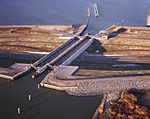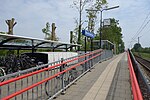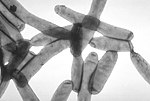Zuiderzee Museum
1948 establishments in the Netherlands20th-century architecture in the NetherlandsHistory of EnkhuizenLiving museumsMaritime museums in the Netherlands ... and 3 more
Museums established in 1948Museums in North HollandOpen-air museums in the Netherlands

The Zuiderzee Museum, located on Wierdijk in the historic center of Enkhuizen, is a Dutch museum devoted to preserving the cultural heritage and maritime history from the old Zuiderzee region. With the closing of the Afsluitdijk (Barrier Dam) on May 28, 1932, the Zuiderzee was split in two parts: the waters below the Afsluitdijk are now called the IJsselmeer, while the waters north of it are now considered to be part of the Waddenzee.
Excerpt from the Wikipedia article Zuiderzee Museum (License: CC BY-SA 3.0, Authors, Images).Zuiderzee Museum
Wilhelminaplantsoen,
Geographical coordinates (GPS) Address Website Nearby Places Show on map
Geographical coordinates (GPS)
| Latitude | Longitude |
|---|---|
| N 52.706666666667 ° | E 5.3002777777778 ° |
Address
Zuiderzeemuseum - buiten
Wilhelminaplantsoen
1601 MP
North Holland, Netherlands
Open on Google Maps










